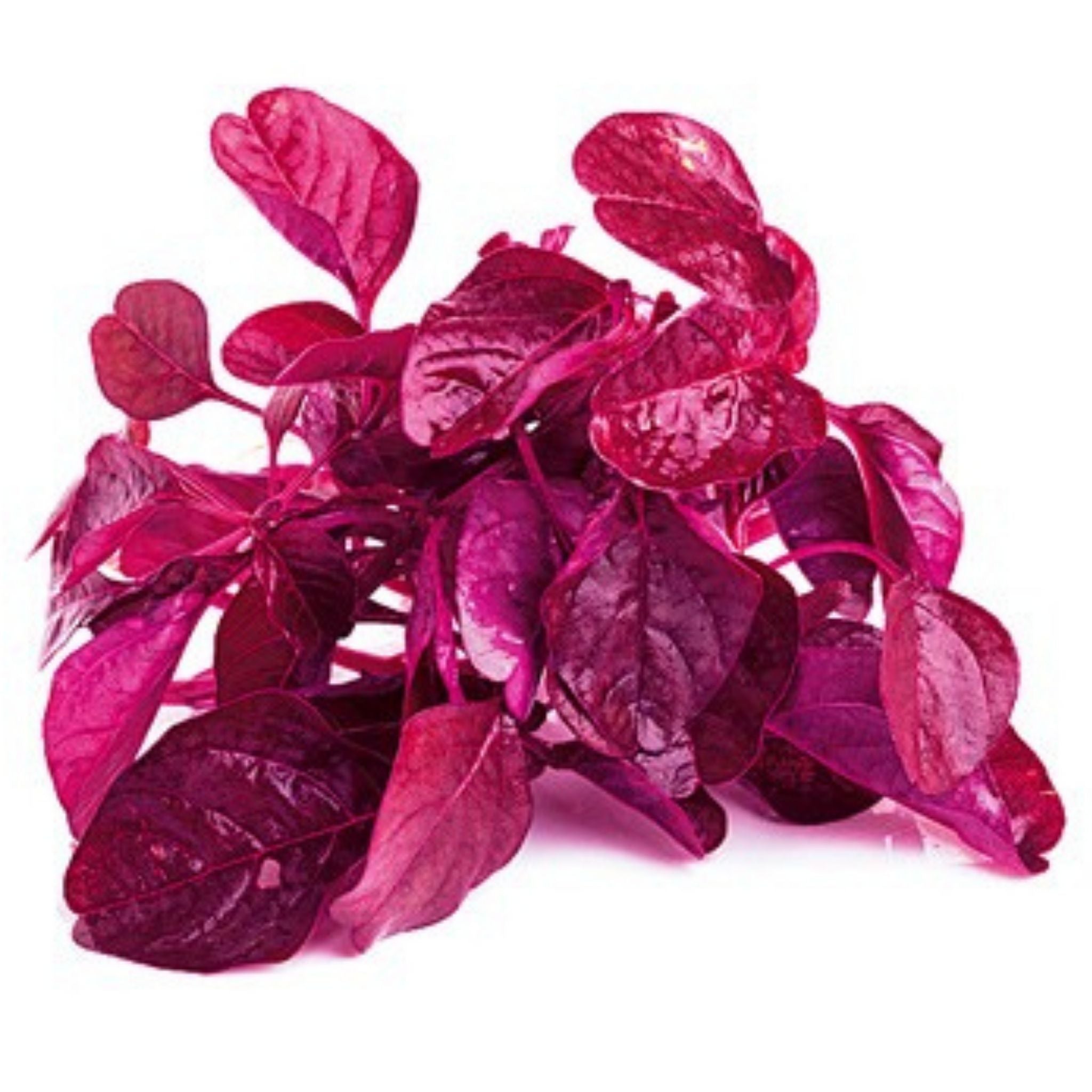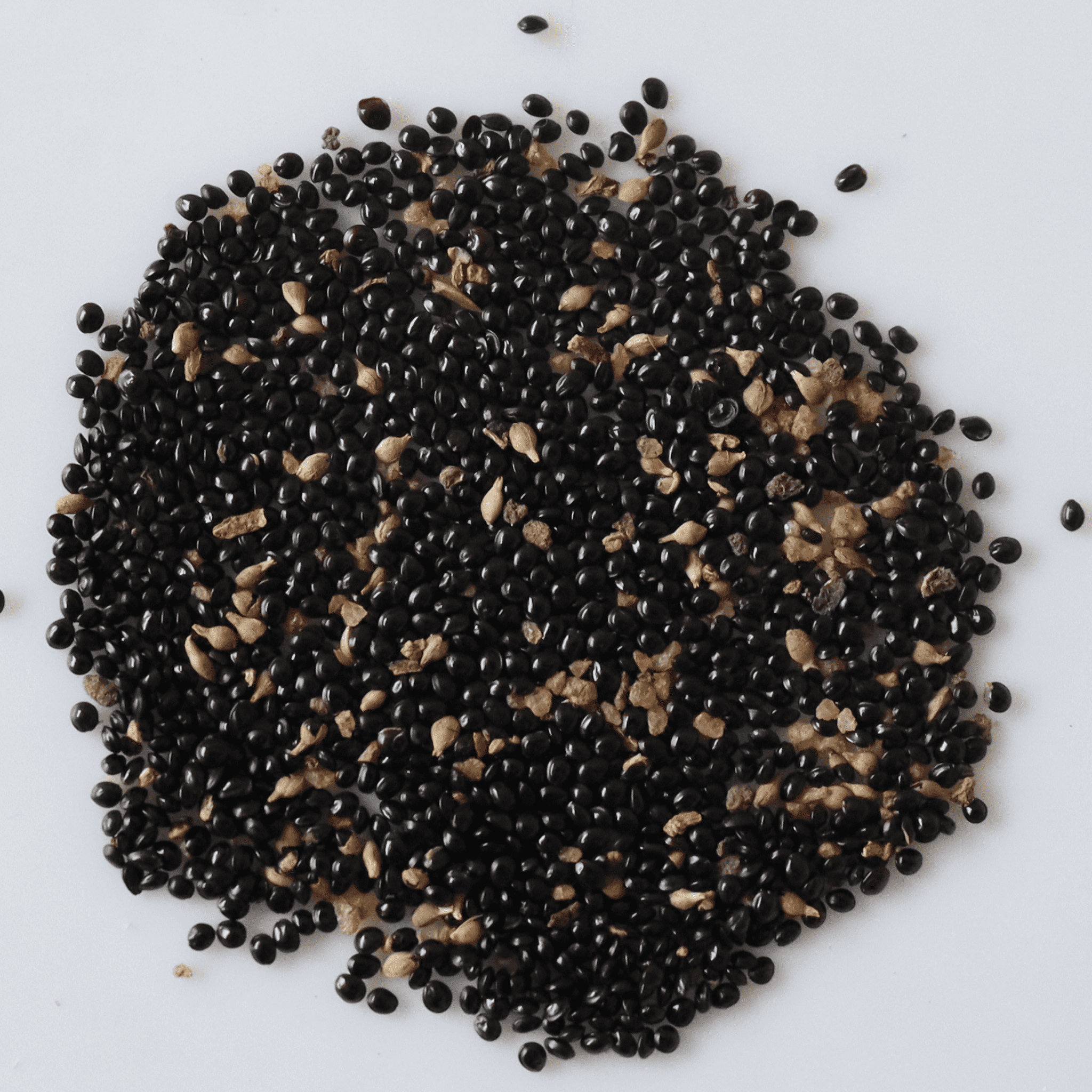


Product Description - Organic Beauty Spinach Seeds (Pattu Cheera)- Open Pollinated
The Red Beauty spinach variety produces stunning red-striped edible leaves suitable for both raw and cooked applications. It is a common vegetable in Chinese and Vietnamese cuisine, and the red leaves impart a bright red hue to the dish. Unlike many other greens, such as mustard and spinach, beauty spinach thrives in heat, so once your cool-weather greens are finished, heat-loving beauty spinach can provide you with delicious, highly nutritious greens. The seeds are also edible and have a high protein content. Beauty spinach leaves are three times as calcium- and niacin-dense as spinach leaves.
Benefits/Uses of Beauty spinach Leaves
- Beauty spinach leaves are a stock of essential phytonutrients and antioxidants that reduce bodily inflammation and add additional nutrition to your wellbeing.
- They contain trace amounts of fat and have no cholesterol, making them a safe go-to food choice for anyone watching their weight or trying to lose it.
- Beauty spinach is a good source of protein and fiber, which can help suppress appetite and aid in weight loss.
- Beauty spinach is beneficial for anemic individuals and increases immunity.
- Vitamin A, Vitamin K, B vitamins, and potassium are abundant in beauty spinach leaves.
- The seeds of the beauty spinach plant are ground into flour and used as a grain. It is a protein-rich flour that is entirely gluten-free, making it extremely useful for those that suffer from gluten intolerance.
- The leaves and grain of beauty spinach are protein-dense, surpassing even oats as a protein-dense grain.
- Beauty spinach leaves are well-known for their ability to reduce bad cholesterol, which is linked to various cardiovascular issues.
- Beauty spinach leaves are calcium-dense, making them helpful for osteoporosis and other bone-related health issues.
- Since beauty spinach leaves are gentle on the digestive system, they are recommended for those recovering from illness or fasting. The leaves of beauty spinach are beneficial in treating diarrhea and hemorrhages. Consumption regularly has been shown to support digestion.
Specifications of Beauty Spinach seeds
|
Common Name |
Beauty Spinach, Pattu Cheera |
|
Sunlight |
Full |
|
Water |
Everyday |
|
Temperature |
60-90 Fahrenheit |
|
Soil |
Prefers soil rich in Nitrogen and Phosphorous |
|
Fertilizer |
Amend poor soils well with compost, manure, or peat moss |
|
Germination |
3-10 days |
|
Harvest Season |
All seasons when the plants grow 1 to 2 feet tall |
| No. of seeds | 1000+ |
Planting and care of Beauty Spinach seeds
Sowing of Beauty Spinach seeds
- Beauty spinach seeds are fragile.
- Consider mixing the seeds with coarse-grained sand when sowing to aid in their even distribution. Split the seeds on the surface of a finely tilled seedbed into spinach pouches and rip them gently.
- It is not essential to plant in rows or trenches because the plants are harvested before they mature.
- The seeds will be watered in and supplied each week in drought periods with an inch of water.
- While beauty spinach is drought resistant, consistent moisture levels result in increased production.
Growing of Beauty Spinach
- Nitrogen and phosphorus are sensitive to beauty spinach.
- Plants grown in garden soils averaged 4 to 6 meters in the spinach pouch, while plants grown in rich soil or compost can reach over 8 feet.
- A well-drained loam is ideal, but both plants thrive in all but the most poorly aerated clay soils.
- You can directly seed beauty spinach seeds into your spinach grow bags.
- Notice that spinach beauty plants are frost-prone. Spinach beauty enjoys warm temperatures.
- Seeds should be sowed early in the season, and soil covered slightly.
- Seeds or seedlings should be spaced 10-12" apart.
- They tolerate small crowds and look fine in groups or clumps.
Harvesting of Beauty Spinach leaves
- In seven to fourteen days, the seeds will sprout.
- After a few days, harvest the tiny sprouts with their first pair of true leaves for use as microgreens. However, for optimal production, allow the plants to reach a height of 1 to 2 feet before harvesting.
- Cut the whole plant a few inches above ground level to harvest young beauty spinach greens.
- Frequently, the plant may resprout and grow a second, third, or even fourth crop of greens. Since beauty spinach is a heat-tolerant crop, this method allows for continuous fresh greens production during the summer.
- Enable certain plants to continue growing and flowering if they grow faster than the shoots can be used.
- You may also harvest stalks from mature plants, but the leaves must be thoroughly cooked and the stems peeled. Tenderness is greater in young shoots.
Precautions while growing Beauty Spinach
To keep beauty spinach fresh until it is used in the kitchen or to sell fresh beauty spinach greens at a sale, gather the cut stalks into bunches and store them upright in suitable containers filled with an inch or two of water. The shoots can remain fresh for five to seven days or longer if the foliage is misted with water regularly to prevent it from drying out.
Common problems affecting Beauty Spinach and solutions
Beauty spinach is susceptible to a number of the same pests and diseases as other vegetables. Aphids and flea beetles are prevalent; insecticidal soaps and neem cakes are effective against the former while floating row covers protect the latter. Avoid using commercial pesticides that contain a "wait to choose" or another form of consumption alert. Numerous pesticides are broad-spectrum, designed to kill various insects, and can contain ingredients that are not intended for human consumption.
Root rot can also be a concern in warm, dense soils or during periods of heavy rainfall. Once root rot develops, it is necessary to extract the plant. Your best protection against this problem is to keep the soil well-drained and to avoid overwatering the plant.
No. of Beauty Spinach Seeds - 500+





